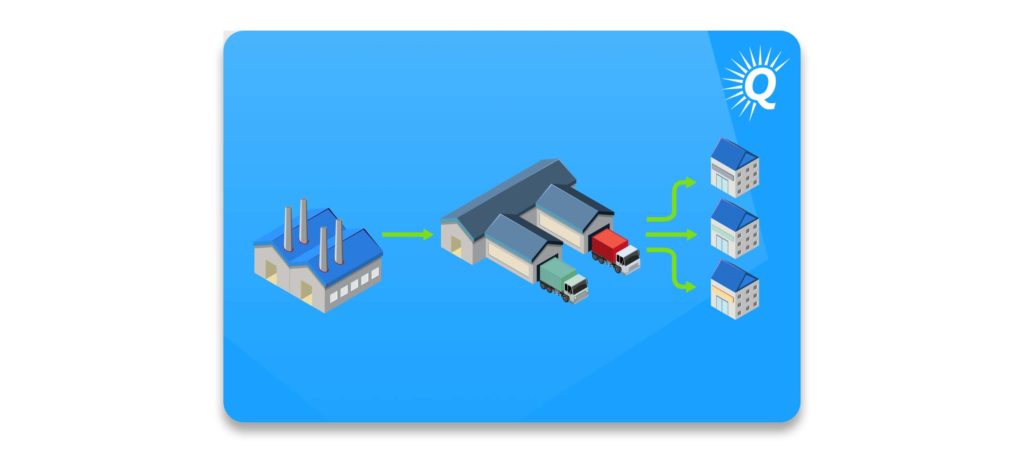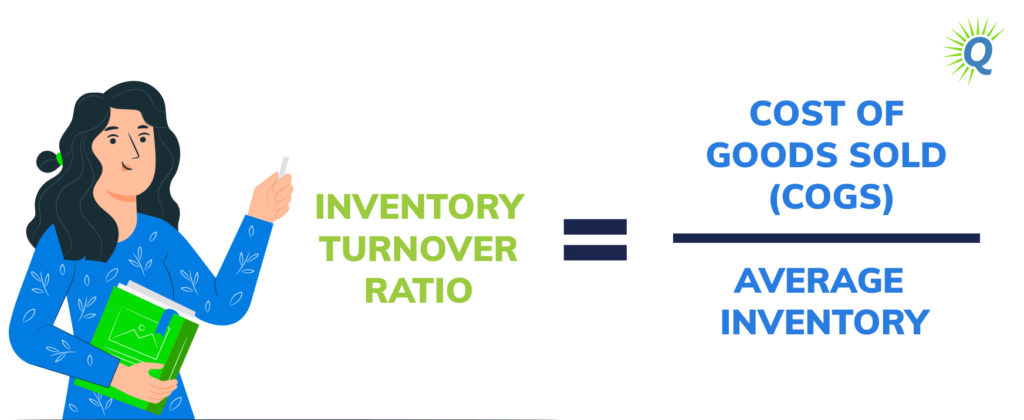Topics:
Never Miss a Beat - Get Updates Direct to Your Inbox
FILTER:


How to Optimize Your Ecommerce Supply Chain
By Quiet Light
Nothing is more important to ecommerce businesses than having reliable supply chains. Without them, it’s nearly impossible to maintain adequate stock levels, ensure product quality, and run a profitable business. Therefore, as an owner, it’s essential to understand how to design and optimize an ecommerce supply chain that supports the success of your company.
When you’re first launching an ecommerce business, it’s normal to be hyper-focused on activities such as branding and product validation. While these elements are important, it’s also essential to pay close attention to the systems that enable your business to scale. The sooner you implement effective supply chain management practices, the quicker you can experience rapid growth.
In this article, we address several key questions about ecommerce supply chains, including:
- How ecommerce supply chains work and why they’re important
- What you should pay attention to when evaluating your supply chain
- Strategies to help you design and optimize your ecommerce supply chain
- How to implement best practices for supply chain management


How Ecommerce Supply Chains Work
An ecommerce supply chain is a series of steps by which inventory is produced and delivered. Generally, it starts with sourcing raw materials and ends when products are delivered to customers.
Between sourcing raw materials and delivering products to customers lie numerous other steps that must be carefully managed to ensure efficiency, quality, and profitability. Each supply chain is different, but common steps include:
- Sourcing raw materials
- Manufacturing finished goods
- Quality control
- Transporting inventory
- Warehousing
- Order fulfillment
Each of these steps can be broken down into a variety of sub-steps based on your supply chain’s specific requirements. In addition, all efficient supply chains must have logistics management and demand forecasting practices in place to ensure the entire process runs smoothly and effectively.
Thinking of Selling Your Business?
Get a free, individually-tailored valuation and business-readiness assessment. Sell when you're ready. Not a minute before.
The Importance of Ecommerce Supply Chain Management
Ecommerce supply chain management is important for several key reasons. A few of these include:
- Ensuring product quality
- Avoiding stockouts
- Managing cash flow
Without a standardized production and quality control process, it’s difficult to ensure consistent quality among products. Needless to say, shipping defective or low-quality products is one of the quickest ways to destroy your product listings—or worse, your brand.
Additionally, a well-functioning supply chain reduces the chances of supply chain interruptions. Any owner who’s encountered stockouts knows how frustrating it is to miss out on sales due to inventory shortages.


There are a few different elements involved when it comes to ensuring your supply chain operations perform as expected. For starters, you need to have effective forecasting practices in order to accurately predict the demand for a given time period. In other words, you need to have a pretty clear idea of how much inventory you’ll be selling in the coming months. Such information is critical when it comes to choosing the right order quantities and managing cash flow effectively.
“A well-functioning supply chain reduces the chances of supply chain interruptions.”
Another element is the reliability of your production and transportation processes. How reliably can your manufacturer access the required raw materials? Do your producers’ geographical locations present transportation challenges (e.g., China)? Different products have different import requirements, too, so you should always do your research to understand the specific policies when doing supply chain optimization.
How to Evaluate Your Current Ecommerce Supply Chain
Generally, there are three critical elements you should pay attention to when evaluating your ecommerce supply chain. These include quality, time, and cost. There are several specific factors that can impact each of these elements.
Below, we’ve included a summary of some of the most critical metrics you should pay attention to when evaluating your supply chain. You’ll notice each of these relates to one or more of the elements mentioned above (quality, time, or cost).


Supply Chain Cycle Time
Supply chain cycle time is the total amount of time each of the component parts of your supply chain requires. In other words, it reflects how long it would take to deliver a product to a customer if you had no inventory at the time of the order.
Your supply chain cycle time is important because it reflects how long your entire supply chain takes to produce and deliver products. Instead of only looking at a specific component of your supply chain, it accounts for each and every step. This enables you to gain a wide-angle view of how quickly (or slowly) your supply chain operates, allowing you to gauge overall efficiency.
“Your supply chain cycle time is important because it reflects how long your entire supply chain takes to produce and deliver products.”
Buy a Profitable Online Business
Outsmart the startup game and check out our listings. You can request a summary on any business without any further obligation.
Inventory Turnover Ratio
Your inventory turnover ratio reflects how many times your inventory is sold and replaced during a given period of time. Typically, it’s calculated on an annual basis. The formula to calculate inventory turnover ratio is as follows:


A higher inventory turnover ratio indicates you’re selling products quickly and not storing inventory for a long period of time. Therefore, a higher inventory turnover ratio is better than a lower one. A lower inventory turnover ratio often indicates demand may have slowed or the supply chain isn’t operating at maximum efficiency.
“A higher inventory turnover ratio indicates you’re selling products quickly and not storing inventory for a long period of time.”
Cash-to-Cash Cycle Time
Cash-to-cash cycle time measures the length of time between paying for inventory and earning revenue from selling that inventory. For example, if you pay for inventory on June 1 and sell it on August 1, your cash-to-cash cycle time is about 60 days.
Cash-to-cash cycle time is an important metric to pay attention to when seeking to maximize ROI. The quicker you can recoup your investment in inventory, the quicker you can reinvest that cash into more inventory. For businesses with limited capital, this metric is especially important.
Shipment Time
Shipment time is the length of time it takes to ship inventory from your supplier to your fulfillment or distribution center. This is one of the metrics that will help determine your supply chain cycle time, delivery speed, inventory turnover ratio, and cash-to-cash cycle time.
Of course, shorter shipment times are better than longer ones. This metric is important to pay attention to when you’re comparing suppliers. In addition to looking at average shipping times, it’s also wise to consider the likelihood of encountering a shutdown, which numerous suppliers have experienced in the last few years.


Perfect Order Rate
Perfect order rate refers to the percentage of orders that were fulfilled without a supply chain disruption or issue. Essentially, it reflects how effectively your supply chain is operating from a quality and delivery standpoint.
Variables that could reduce your perfect order rate could include inventory losses, delays, damages, inaccurate labeling, or quality issues. If your perfect order rate is high, you know your supply chain is generally operating well. If your perfect order rate is less than satisfactory, you probably want to examine your fulfillment operations and other component variables that might be affecting it. Of course, doing so can help better meet customer expectations.
“Perfect order rate refers to the percentage of orders that were fulfilled without any disruptions or issues.”


How to Design an Effective Ecommerce Supply Chain
Designing an effective supply chain requires carefully examining each component of your production and delivery process.
If you’re seeking to optimize an existing supply chain, start by evaluating your supply chain metrics. Look for parts of your supply chain that are underperforming. Then, take proactive steps to address the issues. Sometimes that requires having a difficult conversation with a supplier. At other times, it may mean finding a new supplier, freight forwarder, or logistics partner who can meet their obligations. Each situation is unique, so it’s important to take an individualized approach when addressing your existing supply chain process.
If you’re building a supply chain from scratch, there are few general steps that can help you establish a great supply chain strategy.
“If you’re seeking to optimize an existing supply chain, start by evaluating your supply chain metrics.”


Source High-Quality Products
Every ecommerce business owner loves to minimize inventory cost, and for good reason. To a large extent, your profitability depends on managing your shipping cost and other expenses effectively. However, success also requires providing a positive customer experience.
While costs are always an important consideration, it’s critical you don’t only pay attention to prices when sourcing products. Instead, you should also be intently focused on finding high-quality products that customers love. Doing so can help you get more five-star reviews, charge higher prices, and maximize growth.
To evaluate product quality, it’s important to order samples before going to market with a new product. Then, when you place inventory purchases, be sure to hire a third-party QC agent to do an inspection before shipping to ensure customer satisfaction.


Work with Suppliers Who Communicate Well
In addition to evaluating products for quality, it’s also wise to pay attention to suppliers’ communication. Even if a supplier has great prices and reasonable quality, you might want to think twice about working with them if their communication is lacking.
Ideally, you’ll find a supplier who understands what you’re looking for, provides clear and accurate communication, and responds to your emails in a timely manner. This might seem basic, but there are a lot of suppliers who don’t communicate well. If you choose the wrong supplier partner, you may wind up spending significant time waiting for them to get back to you or cleaning up their mistakes.
“Even if a supplier has great prices and reasonable quality, you might want to think twice about working with them if their communication is lacking.”
Constantly Evaluate Your Supply Chain
Like most things, it’s important to constantly evaluate your supply chain. This enables you to quickly identify challenges that crop up, which allows you to quickly course-correct.
If you have the right supplier and logistics partners, you may find everything runs smoothly on a consistent basis. If you’re constantly encountering challenges, however, you may want to make changes. These could include outsourcing shipping to a new carrier, finding new suppliers, or improving your management practices.


Best Practices for Effective Ecommerce Supply Chain Management
Effective ecommerce supply chain management requires gathering the right information and using it wisely. There are a couple of key steps that can help you succeed with this process.
Invest in Inventory Management Software
Inventory management software can go a long way in helping you make informed decisions. By using the right tools, you can do accurate inventory tracking and forecasting to make data-informed purchasing decisions. This helps you maintain the right stock level and improve cash flow efficiency.
“Effective ecommerce supply chain management requires gathering the right information and using it wisely.”


Use Accrual Accounting
Accrual accounting provides you with insight that cash accounting doesn’t offer.
With accrual accounting, you can more accurately understand your business’s trends. Of course, knowing your trends is a critical part of making the right purchase decisions. Not to mention, your business’s trends reveal important overall insights into the weaknesses and opportunities your ecommerce business faces. Accrual accounting also goes hand in hand with inventory management practices.
By looking critically at all aspects of your supply chain and implementing the right supply chain solutions, you’ll be well prepared to accurately forecast demand, manage cash flow, and consistently meet high standards of quality.
Thinking of Selling Your Business?
Get a free, individually-tailored valuation and business-readiness assessment. Sell when you're ready. Not a minute before.





